There are very few design rules which full cover the installation of crane rails. There are very detailed design rules for cranes and for the structures on which the rail is mounted. With a wealth of experience Gantrail have developed specific checks that can be applied to designs which take account of these rules. Were possible these follow national and international rules but they also fill the gap where there is no guidance. The Gantrail approach is fully backed by calculations.
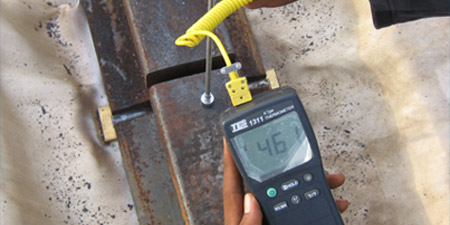
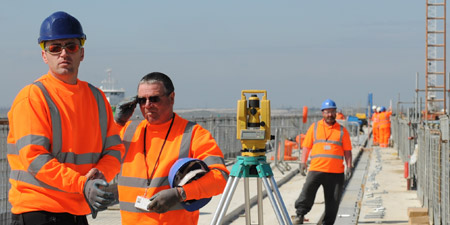
Cranes and machines that run on rails require highly accurate rail. The tolerances needed are more demanding than for normal civil engineering. Therefore, it is wise to carry out a survey of structures before rail installation. In cases where rails have been in use for a long time there can be movement of the structure and foundations. Again it is important to survey before refurbishment work is started.
Gantrail have experience on all sizes of project and in many industries. Container ports and steelworks can have many kilometres of the heaviest crane rails which carry the highest wheel loads. At the other end of the scale high bay warehouses have light railway rails that have to be installed to great accuracy to prevent sway of the tall cranes. Gantrail have tackled all types of project in demanding conditions all around the world.
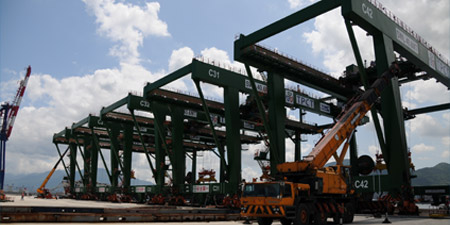
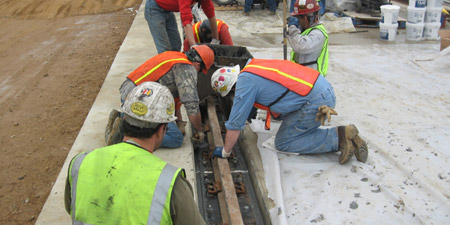
Gantrail spend considerable resources assisting consultants, users and contractors in the design and development of schemes. But it is not just in the design phases that help in needed. Crane rail tracks deteriorate in operation. Planned maintenance is not always possible and Gantrail have staff and agents who can be on hand to assess tracks and advise on remedial measures. Our staff and agents cover most of the world and are normally available at short notices by phone, email or in person.
Click to view more
Hover over the graphic to select a rail product and find out more, click to be directed to the individual product page.
Crane rails come in a wide range of shapes and sizes. The designs have been developed to meet individual countries requirements with some being squat and wide and others are taller and similar in shape to railway rails but they are all more robust. There are now only a few ‘families’ of rails with similar shapes and a range of sizes. Most crane rails range in head width from 45mm to 150mm. A common feature is a thick web to carry the load to the base. There are also a range of steel metallurgies. At their most basic they are made from high carbon manganese steel but some are more highly alloyed. They are all difficult to weld. Gantrail will normal comment on any chosen rail for a project or propose the most suitable choices.
It is an advantage if a rail can rotate a small amount around an axis along its length. This allows the rail to take up a position that matches the wheel and as a result reduces the compressive stresses in the tread of the wheel and the head of the rail. Gantrail supply steel reinforced crane rail pads that allow this. They have been proven in thousands of applications for over 50 years. They also eliminate the metal to metal contact and reduce corrosion between the rail and its support.
It is not practical to fasten crane rails rigidly to the support on which they are mounted. Rails need to be adjusted to the correct position and to be able to move small amounts along the support. They also need to be able to rotate about an axis along their length. But they should be fixed rigidly from significant sideways movement. Gantrail have developed a range of adjustable crane rail fixing clips for all sizes of rail. These can be fastened by means of bolting or by welding to a steel surface. Some in the range will resist the highest expected loads but other are compact and light and are for smaller applications.
Most sole plates look like simple plates of steel with many holes. But the challenge for the track system designer is to combine the requirements of the concrete foundations with its reinforcement and expansion joints with the needs of the rail system. Hole positioning is most important. There may be a need for rail fixed points and earthing. There is also a need for high accuracy sometimes combined with corrosion protection. Bolts for fixing sole plates need to be made such that they will not rotate on being tightened. Gantrail also supply more sophisticated system which allow for releveling a rail after installation.
The upper surface of poured concrete it very weak and will not support the loads imposed by a steel crane wheel. The surface needs to be cleared of soft material before the gap between the structural concrete and the steel sole plate.is filed with high strength grout. Gantrail supply two types of grout for the majority of applications. Some cases require the strength of an epoxy based system whereas others can accept special cement bases grouts. Smaller qualities of fast curing polyester grouts are used to secure bolts in premade holes in concrete.
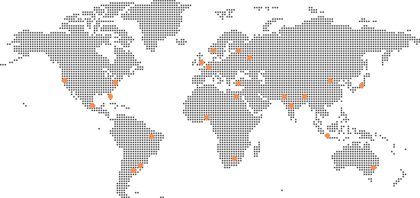
Gantrail operate worldwide with offices and distributors in most major countries. To find out more information, enquire about becoming a Gantrail partner or if you want to contact your local Gantrail representative, please click below.
Gantrail are dedicated to sharing their 50 years of expertise, showcasing the latest improvements in the design, installation and support of crane rail interfaces that they bring to the industry.
View our video resources